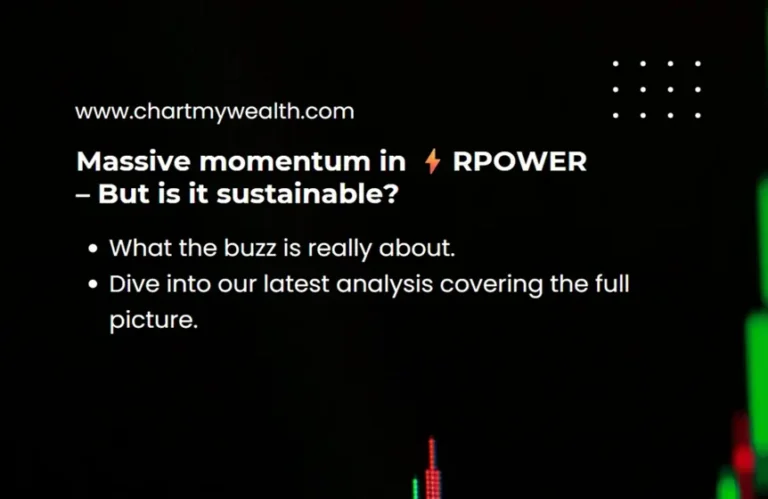JP Power Share Price Target 2025, 2026, 2027, 2028, 2029, 2030
This article explores JP Power Share Price Target 2025, 2026, 2027, 2028, 2029, 2030 and for the upcoming years 2025 to 2030. We’ll analyze the company’s operations, financials, and future growth outlook using expert projections and historical data. Ideal for investors tracking JP Power share price target trends and planning long-term investments.
Company Overview
Jaiprakash Power Ventures Ltd (JP Power), incorporated in 1994, is a diversified energy player engaged in thermal and hydro power generation, coal and sand mining, and previously in cement grinding. It operates multiple power plants:
- 400 MW Vishnuprayag Hydro Plant (Uttarakhand)
- 500 MW Bina Thermal Power Plant (M.P.)
- 1320 MW Nigrie Supercritical Plant (M.P.)
The company also owns the Amelia Coal Mine (3.92 MTPA) and is investing in FGD systems and Bandha North coal mine. Segment revenue: Power (77%), Sand (14%), Coal (9%).
JP Power Share Price Target Tomorrow
Considering current momentum, market sentiment, and technicals (RSI: 68.4), JP Power share price tomorrow is expected to be in the range of ₹16.00 – ₹16.50.
JP Power Share Price Target 2025
JP Power is expected to maintain its profitability into 2025 with a growing contribution from its coal mining business, aided by strong operating margins of 34% in FY24. The company is actively reducing its debt, positioning itself well for a capex-driven economy. The base case assumes continued execution of projects, while the bull case anticipates higher utilization of coal assets and strong power demand. The bear case reflects macroeconomic risks and regulatory delays.
| Year | Bull Case (₹) | Base Case (₹) | Bear Case (₹) |
|---|---|---|---|
| 2025 | 22.5 | 19.2 | 15.5 |
JP Power Share Price Target 2026
In 2026, JP Power’s revenue may benefit from the commissioning of Flue Gas Desulphurization (FGD) units, aligning the company with environmental mandates. Cost efficiencies, improved asset turnover, and stable coal prices are likely to support profitability. The stock could reflect these fundamentals in its valuation trajectory.
| Year | Bull Case (₹) | Base Case (₹) | Bear Case (₹) |
| 2026 | 26.4 | 21.5 | 17.1 |
JP Power Share Price Target 2027
By 2027, JP Power may achieve increased free cash flow through operational efficiency and strategic monetization of non-core assets like cement units. Demand from the industrial and infrastructure sector will likely remain robust, supporting revenue growth. Risks include any regulatory overhang or delays in capital allocation.
| Year | Bull Case (₹) | Base Case (₹) | Bear Case (₹) |
| 2027 | 30.5 | 24.7 | 18.9 |
JP Power Share Price Target 2028
2028 could witness sustained revenue momentum through long-term coal linkages and potential expansion in thermal generation. Increased reliability of its coal supplies from Bandha North mine would support margins, while debt servicing cost reduction may reflect in higher net profit.
| Year | Bull Case (₹) | Base Case (₹) | Bear Case (₹) |
| 2028 | 35.2 | 27.9 | 21.0 |
JP Power Share Price Target 2029
In 2029, long-term structural tailwinds such as digital grid management, renewable integration support, and a strong base of captive coal production will likely uplift JP Power’s valuation. Completion of prior capex may reflect strongly in earnings. However, macro volatility may limit upside.
| Year | Bull Case (₹) | Base Case (₹) | Bear Case (₹) |
| 2029 | 39.5 | 31.2 | 23.4 |
JP Power Share Price Target 2030
By 2030, JP Power may have emerged as a leaner and more focused power and mining company with a solid balance sheet. Integration of digital tech and efficiency-led upgrades across plants may position the company as a stable mid-cap utility. A favorable policy environment would support the bull case.
| Year | Bull Case (₹) | Base Case (₹) | Bear Case (₹) |
| 2030 | 44.8 | 35.1 | 26.2 |
Should I Buy JP Power Stock?
| Year | Bull Case (₹) | Base Case (₹) | Bear Case (₹) |
| 2025 | 22.5 | 19.2 | 15.5 |
| 2026 | 26.4 | 21.5 | 17.1 |
| 2027 | 30.5 | 24.7 | 18.9 |
| 2028 | 35.2 | 27.9 | 21.0 |
| 2029 | 39.5 | 31.2 | 23.4 |
| 2030 | 44.8 | 35.1 | 26.2 |
JP Power Financials (2024-2030 Forecast)
| Year | Revenue (₹ Cr) | Operating Profit (₹ Cr) | Net Profit (₹ Cr) | EPS (₹) | OPM % |
| 2024 | 6,763 | 2,236 | 1,022 | 1.49 | 33% |
| 2025 | 5,462 | 1,855 | 814 | 1.19 | 34% |
| 2026 | 6,100 (est.) | 2,050 (est.) | 930 (est.) | 1.36 (est.) | 34% |
| 2027 | 6,700 (est.) | 2,280 (est.) | 1,100 (est.) | 1.61 (est.) | 34% |
| 2028 | 7,400 (est.) | 2,590 (est.) | 1,310 (est.) | 1.91 (est.) | 35% |
| 2029 | 8,000 (est.) | 2,880 (est.) | 1,540 (est.) | 2.24 (est.) | 36% |
| 2030 | 8,800 (est.) | 3,210 (est.) | 1,800 (est.) | 2.62 (est.) | 36% |
Is JP Power Stock Good to Buy? (Bull vs Bear Case)
Bull Case:
- Rising power demand in India
- Operational profitability
- Improved debt-to-equity ratio
- Successful capex execution
- Strong coal block performance
Bear Case:
- Regulatory risks
- Slowdown in infrastructure investment
- Delay in capex execution
- Volatile coal prices
- Limited promoter holding (24%)
Conclusion
JP Power has transformed from a heavily indebted company to a stable power utility with solid coal assets and profitability. Investors should monitor regulatory moves and execution of capital projects. A long-term position may be rewarding in the bull case.
FAQs
Q1: What is JP Power’s share price target for 2025?
A: In the base case, the 2025 target is ₹19.2.
Q2: Is JP Power a good long-term investment?
A: Yes, under the bull case, it shows steady revenue, profit growth and asset backing.
Q3: What are the key risks in investing in JP Power?
A: Regulatory delays, commodity price fluctuations, and high competition.
Q4: Does JP Power pay dividends?
A: No, currently the company has a 0% dividend payout policy.
Q5: What sectors contribute most to JP Power’s revenue?
A: Power (77%), Sand mining (14%), and Coal (9%).
Also read: Reliance Power Share Price Target | Rama Steel Tubes Share Forecast
External Resource: Company Filings on NSE India






One Comment